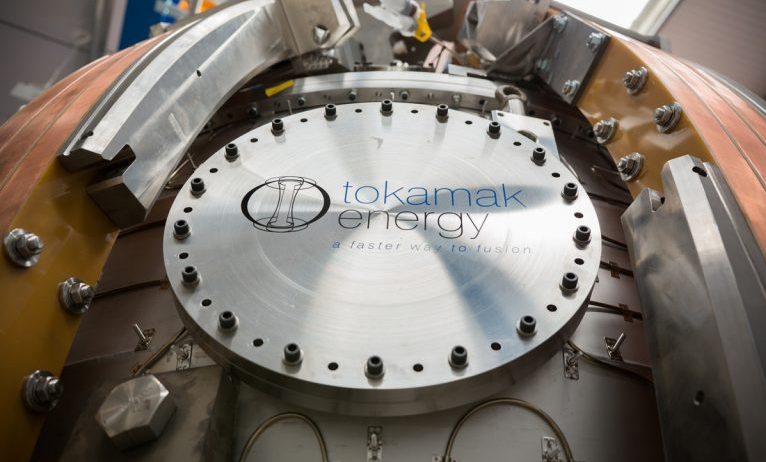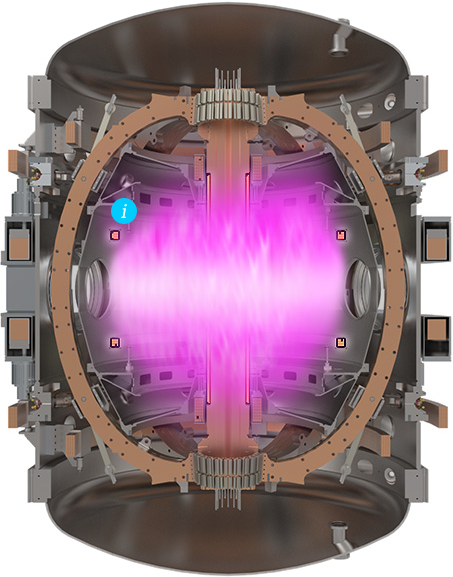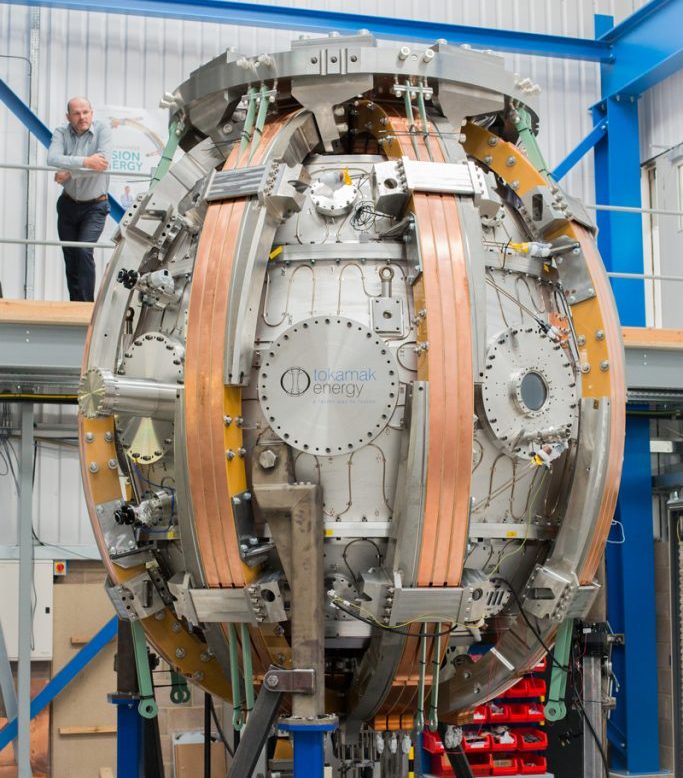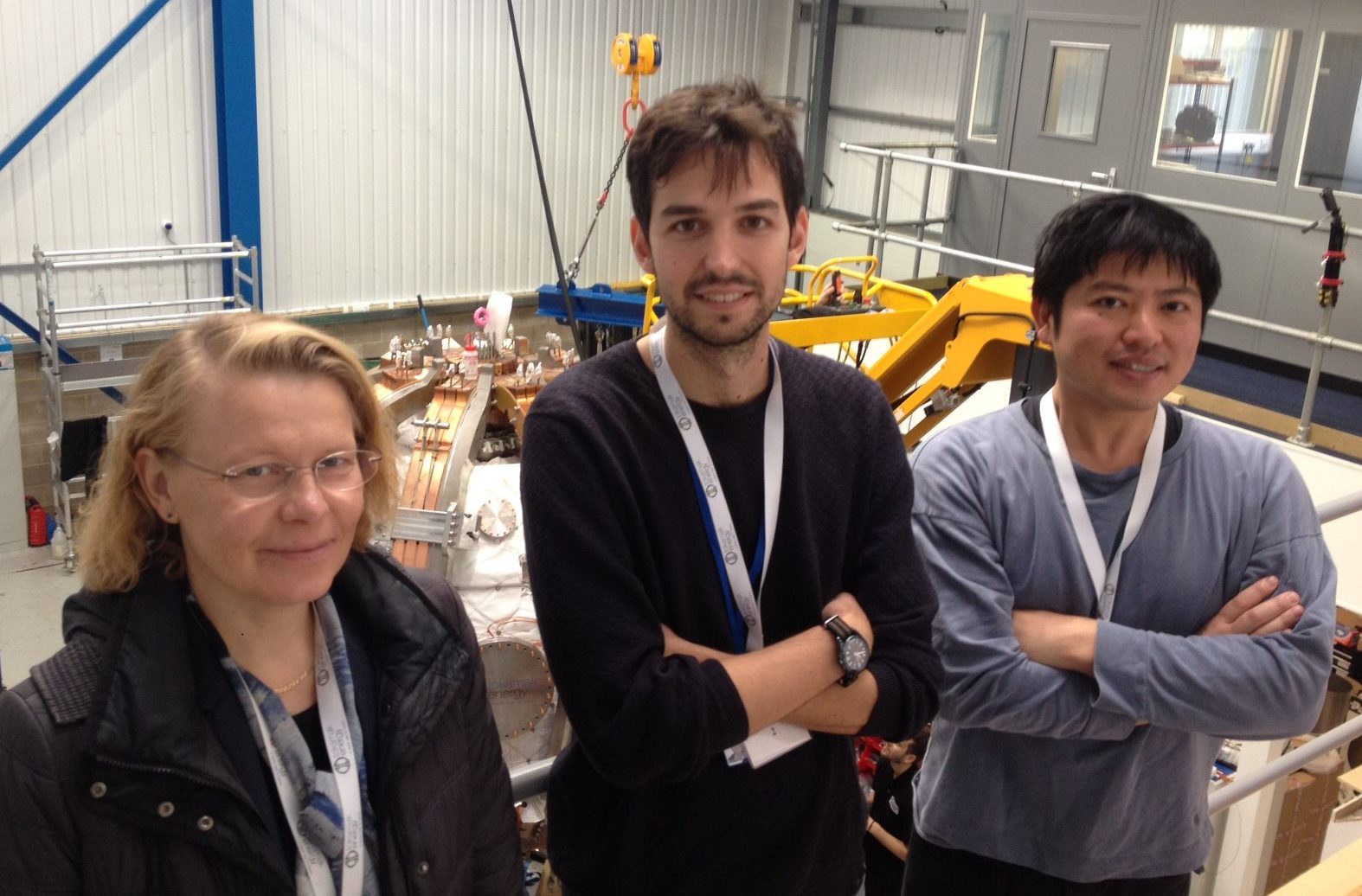
Tokamak Energy is a privately-funded company grown out of Culham Centre for Fusion Energy (CCFE), UK, in 2009 to design and develop small spherical tokamaks to produce neutrons for a range of scientific applications. Currently, it embarks on the quest for a compact solution for fusion providing energy into the grid by 2030.
Tokamak Energy collaborates with Princeton Plasma Physics Laboratory (PPPL), Imperial College of London, University of Oxford and University of Tokyo, amongst other institutions. As a private venture, its developments are covered by over 20 families of patent applications.
In the 1980’s, Dr Alan Sykes, one of the founding members, carried out a theoretical study that revealed that modifying the shape of the tokamak would have an impact on its performance. By moving from a doughnut-shaped plasma ring to an apple-shaped plasma ring, the plasma would be contained more efficiently, i.e. it would be possible to achieve a much higher plasma pressure for a given magnetic field.
Spherical tokamaks (ST) where designed following this concept. While a traditional tokamak has a toroidal confinement area that gives it an overall shape similar to a donut with a large hole in the middle, the spherical tokamak reduces the size of the hole as much as possible, resulting in a plasma shape that is almost spherical, often compared with a cored apple. The experiments performed on START and MAST tokamaks verified this new concept.

However, the problem with the more compact spherical design was the lack of space in the centre of the machine for magnets and their protective shielding. This meant that achieving high enough magnetic fields for fusion power production would be tricky.
In 2012, with the emergence of high temperature superconductors (HTS) in a form suitable for winding into magnets, Tokamak Energy saw a viable route to cost-effective, commercial fusion power in smaller machines. Since then, its work focuses on developing compact spherical tokamaks to generate fusion reactions since its design offers the smallest and most cost-effective solution.
The ST40 is the latest compact spherical tokamak reactor developed by the company. It uses a novel technique to generate and heat the plasma, which is called Merging Compression. Normally the role of the solenoid is to start-up the plasma, while with this technique the solenoid is used to maintain the plasma current rather than generate it. Not relying on the solenoid is important in spherical tokamaks as there is only limited space in the centre of the machine.

In April, ST40 produced the first plasma which achieved temperatures of 15 million degrees Celsius. Next target is to reach 100 million degrees Celsius in 2018, which is considered the temperature necessary for controlled fusion and no other privately-funded fusion reactor has ever achieved it.
Achieving these objectives will prove that commercially-viable fusion power can be produced in compact spherical tokamaks and with the economical advantage that a ST power plant would have a volume up to 100 times smaller than ITER.

Source: Energy Tokamak

1 thought on “Tokamak Energy, a private fusion venture”